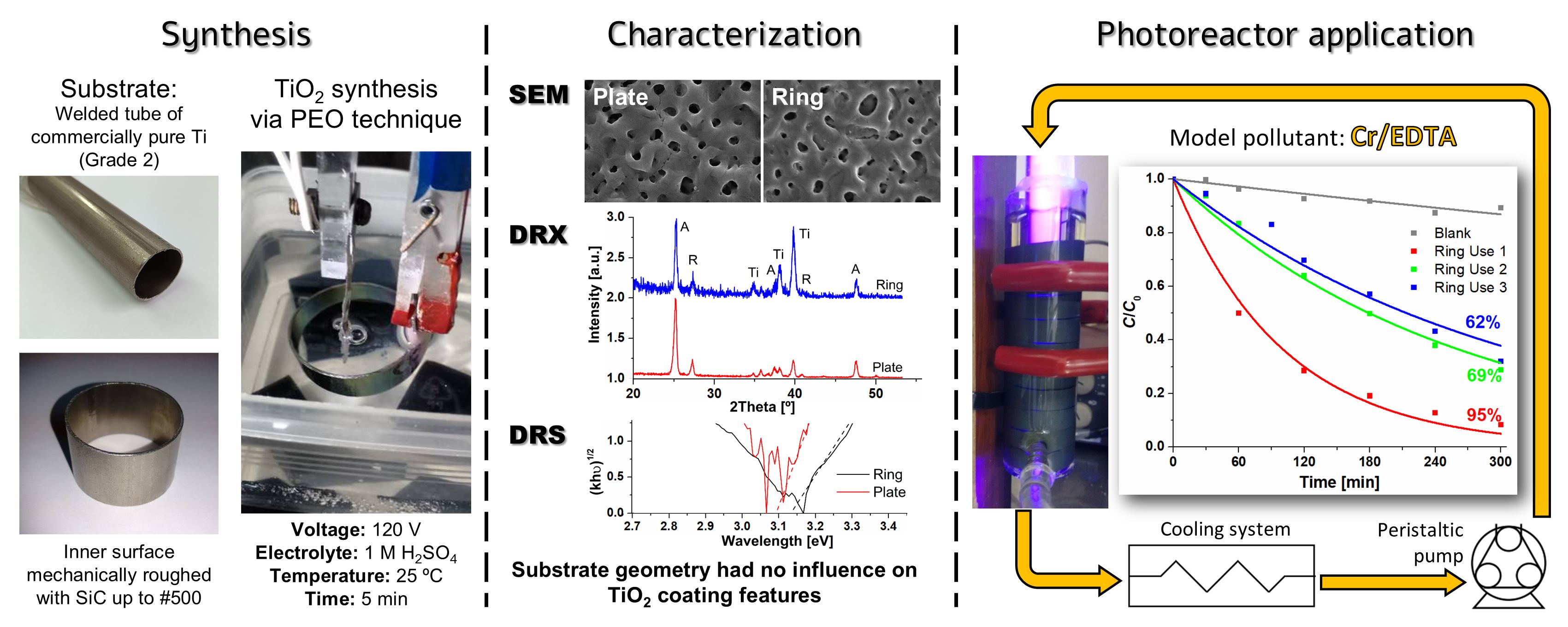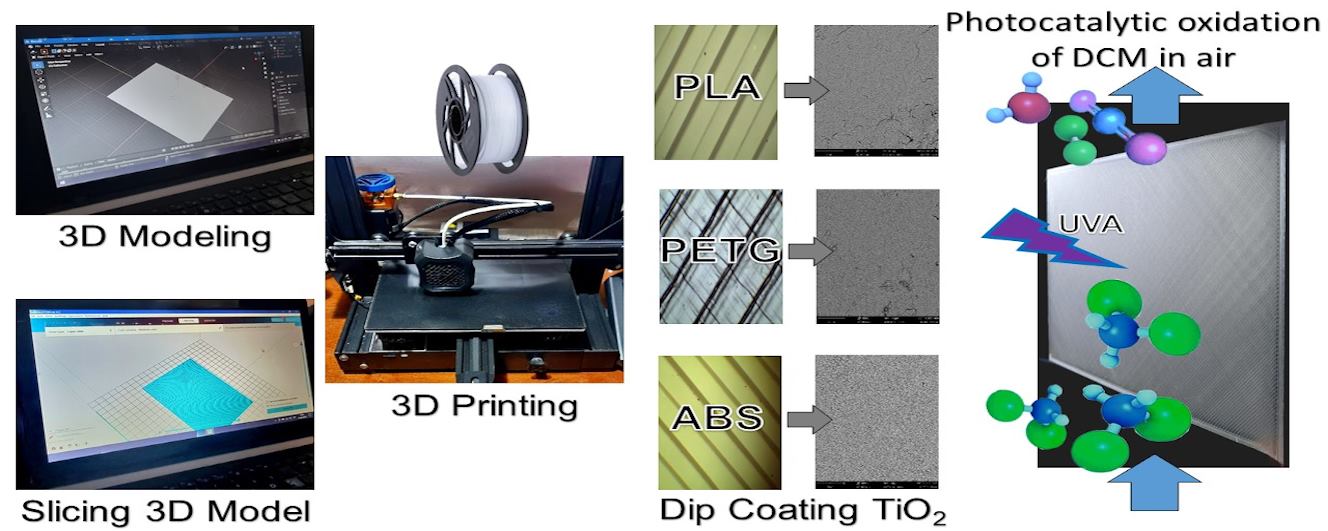Found 2 results
Article
03 April 2025Design, Building and Performance of a New Photocatalytic Reactor Using TiO2-Coated Rings Synthesized by Plasma Electrolytic Oxidation
An annular UV photocatalytic reactor with recirculation in batch was designed and built. The design considered low construction, simple operation and maintenance costs, availability and durability of the materials used, easy cleaning, and high standards of hygiene and safety. The TiO2 photocatalysts were synthesized by plasma electrolytic oxidation (PEO) on commercial Ti rings were compared with coatings obtained on Ti plates as a reference, and no influence of the substrate geometry on the morphology, crystallinity, or bandgap of the coatings was observed. The efficiency of the photocatalytic reactor using 10 TiO2-coated rings was tested by Cr(VI) transformation in the presence of EDTA. The Cr(VI) transformation after 5 h irradiation attained 95%; a rather high photocatalytic activity (62%) was maintained after the third use of the rings without reactivation of the photocatalyst. These coatings synthesized by PEO have not been applied in modular photocatalytic reactors until now.

Article
11 February 2025Functionalization of 3D-Printed Plastics for the Photocatalytic Removal of Organic Pollutants in Air
The study explored the use of 3D-printed plastics as catalyst supports for gas-phase photocatalytic applications. Specifically, it compared three commonly used plastic materials: PLA, ABS, and PETG. The process involved 3D modeling, additive manufacturing through 3D printing, and functionalization via dip-coating with titanium dioxide (TiO2). The study evaluated the loading capacity of the materials, the adhesion of the films, and the optical properties of the photocatalytic plates. Finally, the three plastic samples were tested as support materials in a laboratory-scale flat-plate reactor for the photocatalytic oxidation of dichloromethane in air. Loading capacities of around 3 mg/cm2 for TiO2 were achieved, along with radiation absorption capacities close to 65%. A correlation between loading and absorption fraction was identified, leading to the proposal of a simple saturation model; in turn, it allowed the predictive model of pollutant conversion as a function of the absorbed fraction of radiation. By analyzing both qualitative and quantitative properties and results, in order to determine the most suitable plastic material to be used in a photocatalytic wall reactor, PLA emerged as the best choice among the materials tested. These results show promise for the effective utilization of these plastics in the design of air decontamination devices.
